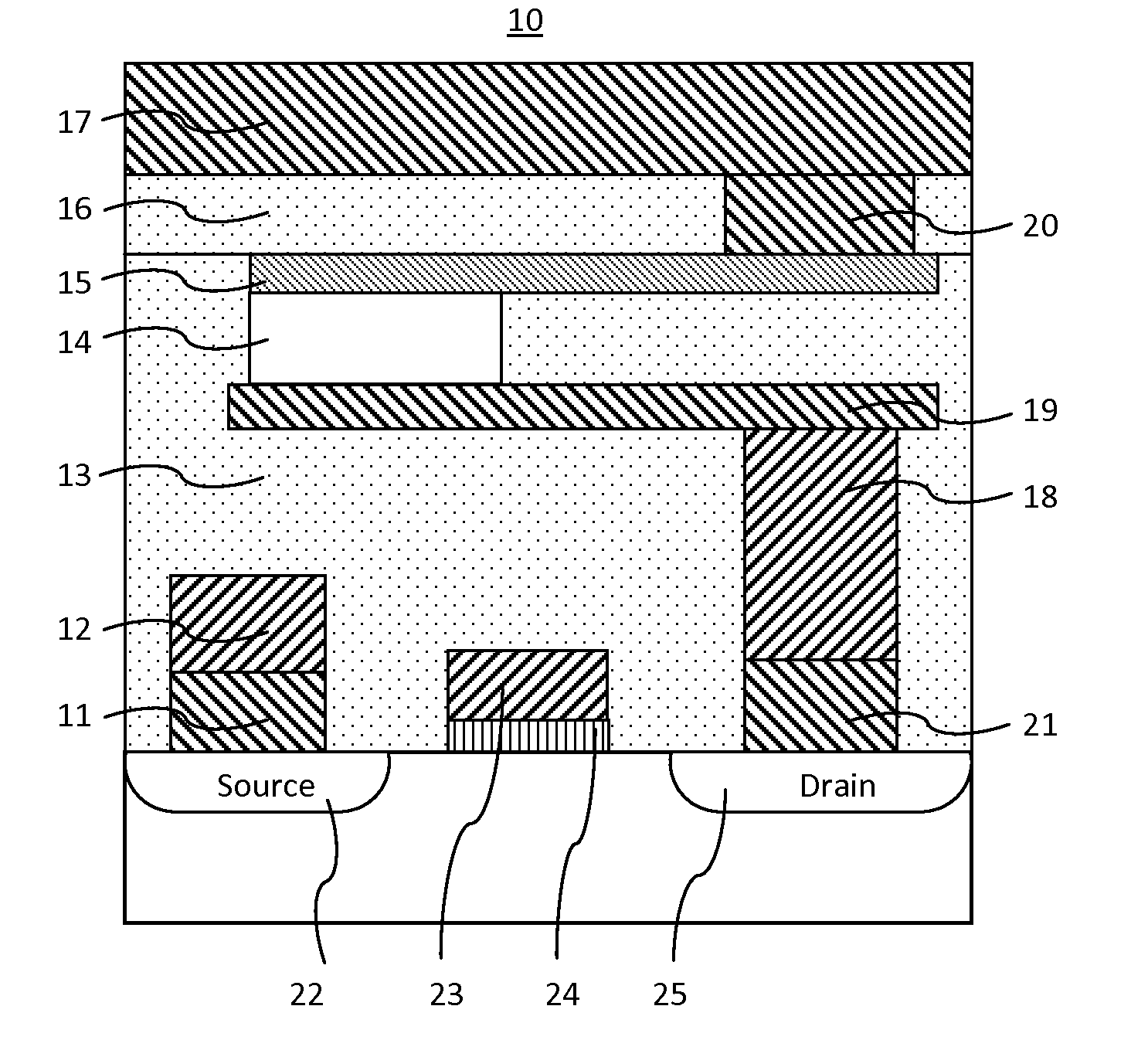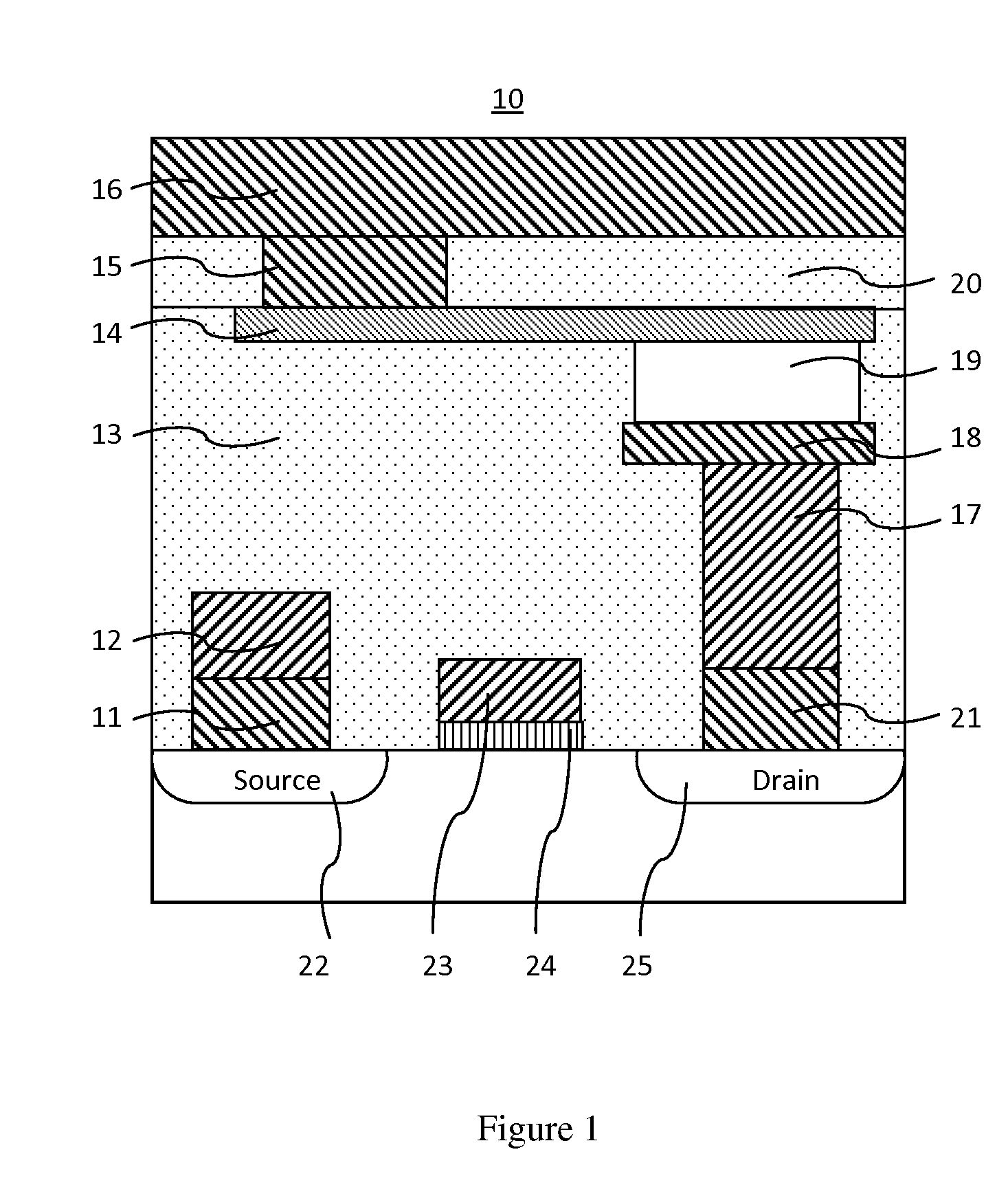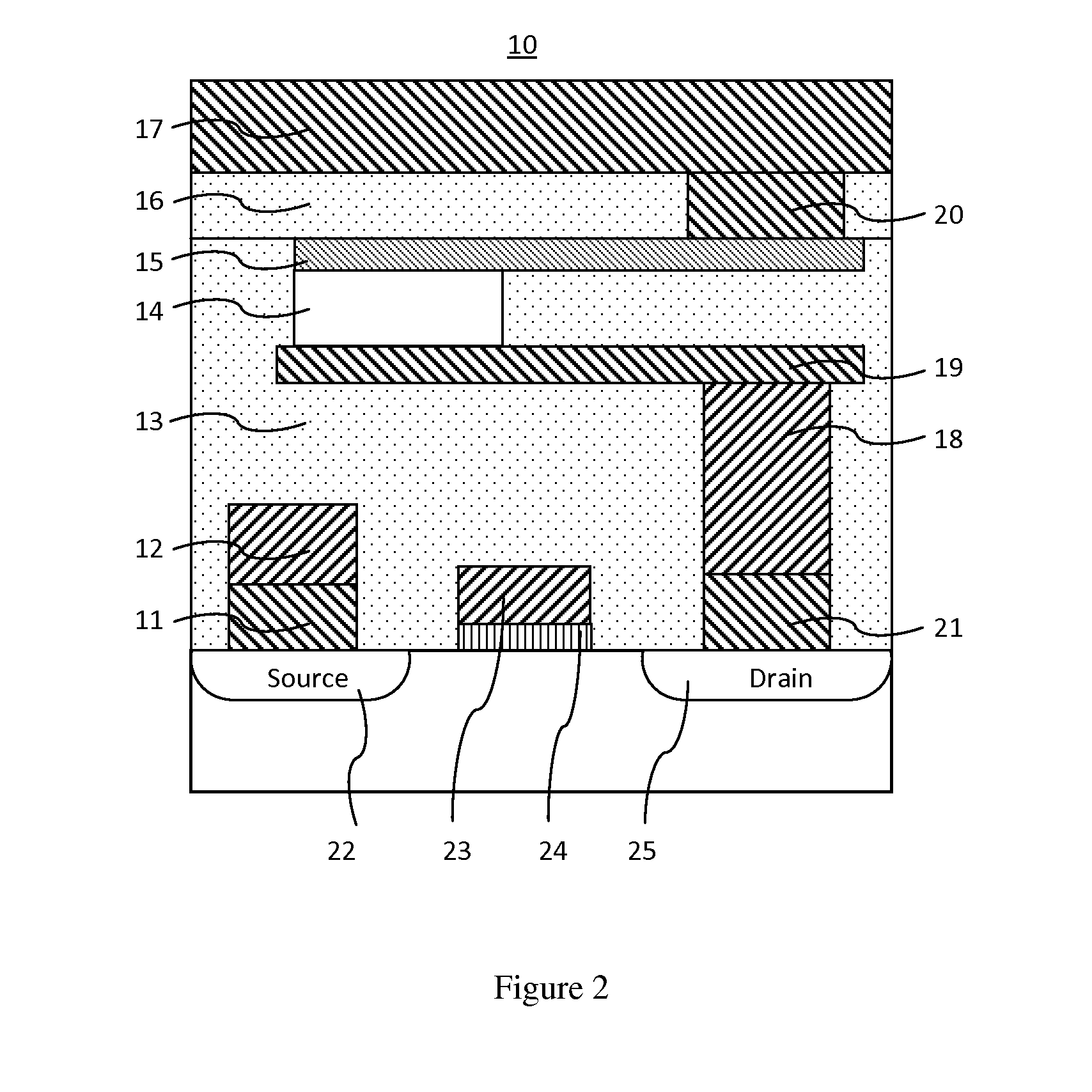Magnetic memory devices
a magnetic memory and memory cell technology, applied in the field of spin transferorque magneticrandomaccess memory (mram) cells, can solve the problems of uncontrollable re-crystallization, uniformity, and typical mtj damage or partial damage, and achieve the effect of reducing undesirable heating
- Summary
- Abstract
- Description
- Claims
- Application Information
AI Technical Summary
Benefits of technology
Problems solved by technology
Method used
Image
Examples
Embodiment Construction
[0020]In general, according to each embodiment, there is provided a magnetoresistive memory cell comprising:
[0021]a bottom electrode provided on a surface of a substrate connecting to a VIA of a select transistor;
[0022]a patterned MTJ stack consisting of a seed layer provided on the top surface of the bottom electrode, an MTJ multilayer provided on the top surface of the seed layer and a cap layer provided on the top surface of the MTJ multilayer;
[0023]a top electrode provided on the surface of the MTJ stack;
[0024]a dielectric thermal barrier layer provided on the top surface of the top electrode;
[0025]a bit-line VIA provided on the surface of the top electrode and surrounded by the dielectric thermal barrier layer and having a vertical distance away from the MTJ stack;
[0026]a bit line provided on the top surface of the dielectric thermal barrier layer and electrically connecting to the bit-line VIA.
[0027]An exemplary embodiment includes a spin-transfer-torque magnetoresistive memor...
PUM
 Login to View More
Login to View More Abstract
Description
Claims
Application Information
 Login to View More
Login to View More - R&D
- Intellectual Property
- Life Sciences
- Materials
- Tech Scout
- Unparalleled Data Quality
- Higher Quality Content
- 60% Fewer Hallucinations
Browse by: Latest US Patents, China's latest patents, Technical Efficacy Thesaurus, Application Domain, Technology Topic, Popular Technical Reports.
© 2025 PatSnap. All rights reserved.Legal|Privacy policy|Modern Slavery Act Transparency Statement|Sitemap|About US| Contact US: help@patsnap.com



